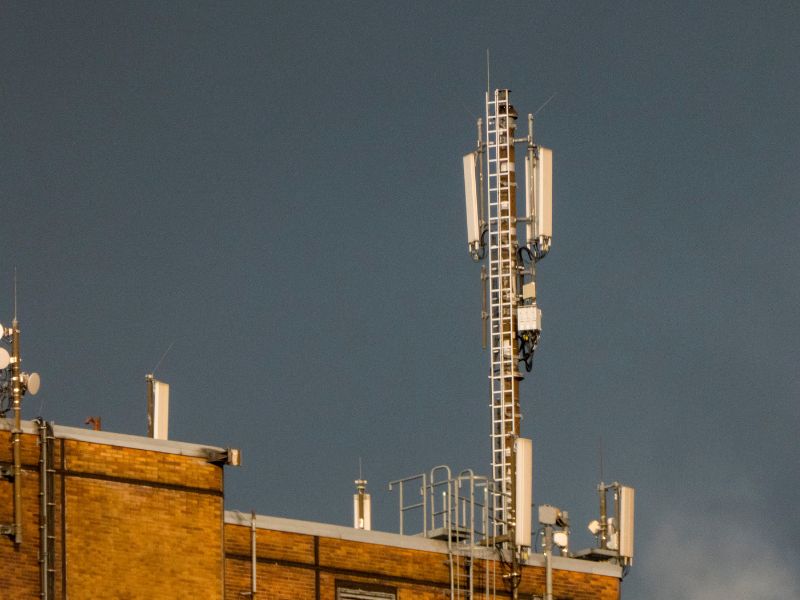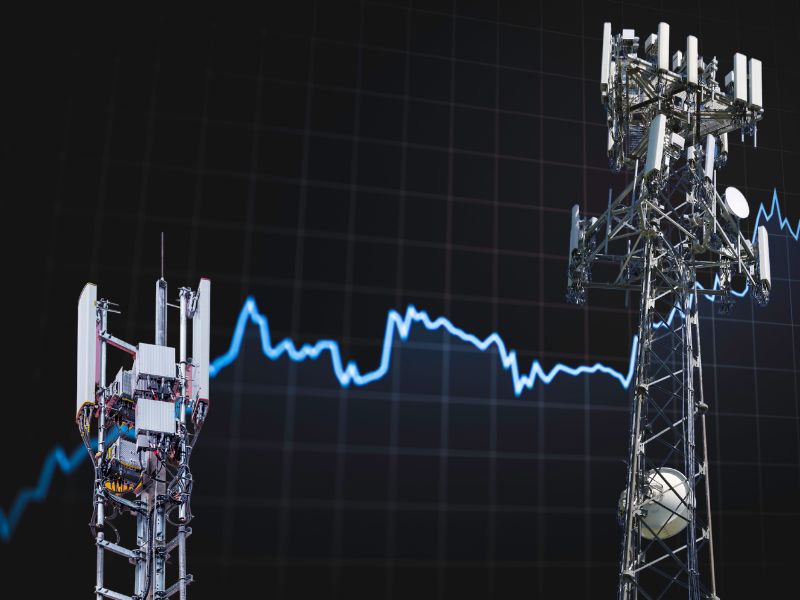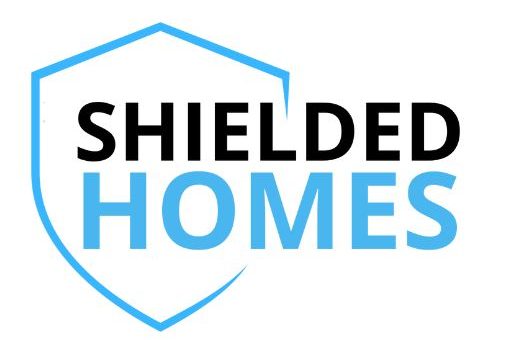In previous articles, I highlighted the potential dangers of living near mobile cell towers. It’s widely accepted that the radiofrequency (RF) emissions from these towers can be detrimental to human health, as evidenced by numerous research studies published on the topic. Furthermore, it’s well-documented that these towers not only compromise the aesthetic appeal of buildings and homes but can also decrease their monetary value, especially if the towers are situated close by.
A common question many ask is, “How did these cell towers end up on the rooftops of our homes?” There’s been much debate on various platforms, with some speculating about conspiracy theories. Who decided to erect a towering structure filled with smart cells in the heart of a community? Why are there so many small cells on the roof of the building next door? Who determines the ideal location, timing, and placement for these mobile and 5G transmitters on buildings?
In this article, I aim to address these questions and provide a comprehensive explanation.

How can you have a cell tower installed on your rooftop?
There are numerous ways individuals can generate additional income from their existing properties. A prevalent approach is to rent out the rooftop to telecom companies for the installation of cell towers.
As the use of smartphones continues to rise, telecom companies are under pressure to expand their tower coverage. Finding space for a new cell tower, which typically requires at least 300 square feet, is challenging, particularly in densely populated urban areas.
Rooftops provide an ideal space for the installation of small cells, microcells, and other distributed antenna systems. These systems allow service providers to swiftly increase their cellular coverage without a significant investment in infrastructure.
Given that rooftops are devoid of interference, walls, or ceilings, it’s no wonder they’re seen as prime real estate in many cities.
In some instances, telecom companies may approach property owners about leasing their rooftop space before the owners even consider it. In such cases, it’s implied that their roof is suitable for leasing; the main concern then becomes negotiating the best deal.
What if property owners are keen on leasing their rooftop space but haven’t been approached by any telecom company? Typically, these owners will collaborate with representatives to manage the cell tower leasing process, from initial research to finalizing the contract. However, a few property owners prefer to undertake this task on their own.
In general, roof could be a candidate as long as the closest tower is outside the range below. The general rule of thumb for tower distance is:
- 3 miles in rural areas
- 1 mile in suburban areas
- ½ mile in urban areas
Demand for coverage is what really determines how much owners get paid. If they have a lot of space but very little demand for a certain provider, they won’t pay out a whole lot to get their space. The density of users and a lack of reliable tower locations is what makes the difference in price.

Cell Tower Lease Rates in 2023 – Get More Rent in Your Agreement
What Is A Cell Tower Lease?
A cell tower lease is a contractual agreement between a landlord that allows a tower company to place a tower on a specified portion of land in exchange for rent through a long-term agreement. The tower company will then use the tower to transmit their own signal or sublet space on the tower for wireless carriers to place their equipment.
The value of these contracts is negotiated before installation, when the lease renews, and during lease buyout discussions.
- Number of cell towers in the US – over 471,000
- Average cost of building a cell phone tower – $275,000+
- Average yearly cell phone tower lease rate – $21,000+
- Wireless carriers added over 68,000 cell sites since 2019
- Cell Tower Companies Generate 20+ Billion Dollars In 2022
- As of 2022 33% Of All Americans Had A 5G Phone
- In 2022 Over 2 Trillion Text Messages Were Sent
- Over 150 Billion Dollars Invested In 5G Since 2018
How much do cell phone tower leases pay?
In 2022, most new cell tower lease offers ranged from $400 per month to $1,800 per month, with the rent rates varying based upon multiple factors, including location, population density, network needs, & construction limitations.
Cell tower rent rates did increase nominally from 2021, but there was a drop in annual rent escalators from an average of approximately 3% annually to around 2% annually, which on its face seems slight, but over a typical cell tower lease term, which is between 25-30 years, could cost the property owner more than $200,000 over the life of that agreement.

Disadvantages of Having a Mobile Tower on Your Property
Health Concerns
According to the American Cancer Society, cell towers might pose health risks including headaches, memory loss, congenital disorders, and cardiovascular stress. While some studies suggest that cell towers could potentially lead to cancer due to their emission of non-ionizing, high Radio Frequency (RF) waves. Long-term exposure to these waves can be harmful to residents’ health. Some of landlords in the past have received complaints from their tenants about the presence of a tower on the property. Some prospective tenants won’t rent from a landowner with a tower on the property due to perceived health risks.
Aesthetic Impact on Property
Having a tall cell tower on one’s terrace or land can diminish the visual appeal of the property, especially in scenic areas. Although cellular companies have tried to either camouflage these towers or introduce smaller ones, they often still stand out and do not harmonize with the surrounding environment.
Long Term Lease Agreement
Most cell tower lease agreements are 25 years or longer. These lease agreements almost never give the landlord the right to terminate while the tenant is allowed to terminate with limited notice. This impacts your future development potential on the property.
Potential to Disturb Neighbors
When a new tower is proposed, there will almost always be people that are upset. The industry calls them NIMBYs- Not In My Back Yard. In some cases, the neighboring property owners will even go so far as picketing the landlord considering a tower. In multiple instances, landlords have approached tower companies after entering into a new lease to inquire about potential ways to exit the agreement due to significant opposition from residents regarding the tower. Although churches or schools are the typical clients for tower operator companies, there are times when even private landowners face opposition.
Difficult to Move
Once a tower is constructed, it is costly to move. If you need that land again in the future, you might think it would be easy to relocate the tower. In that regard, you would be wrong. Many landlords have reported that they wish the tower were not on their property and would like to move it. Towers typically cost $300,000 bare minimum to move assuming the tenant will even consider relocation.

Cities Tap into Cell Towers as a Revenue Stream: The Atlanta Case Study
Scrambling to shore up budgets battered by recession, job losses and foreclosures, Atlanta and several of its neighbors are casting their gazes to the heavens for help. Specifically, to cell towers.
Plans to construct new towers — and reap millions of dollars in rent – have been floated recently in cities or school systems in Cobb, DeKalb and Fulton counties, and in some cases spurring vociferous objections from some residents. In one of the most wired areas in the country, the appetite for cell towers is growing.
Growing, too, is local government’s need for new revenue sources. Leases for cell towers can earn local government more than $1 million annually, with the potential for more. The money isn’t nearly enough to replace revenue lost to the recession. But an extra million dollars could, for example, pay for a dozen police officers in the City of Atlanta.
“It’s all about the money, on both sides,” John Lavelle, Atlanta’s director of real estate portfolio, said of cell tower rent negotiations between the city and telecoms. The hope is to “get the best deal for citizens.”
Across the country, monthly payments to property owners can range from each tower can fall between $750 to $4,000 per month, said Andrew Schrage, a former hedge fund portfolio analyst focusing on the telecom industry.
Many property owners “really don’t understand the value of the site,” said Hugh Odom, a real estate and telecom attorney who represented AT&T for more than 1o years and now negotiates with telecoms on behalf of landowners. “These leases people hold are some of the least optimized assets they have.”
